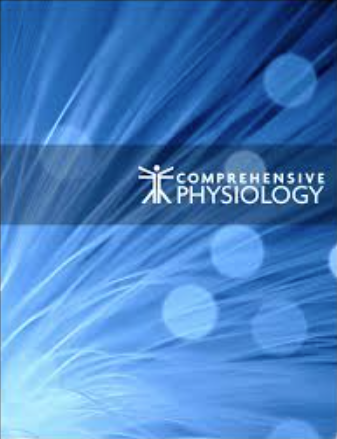求助PDF
{"title":"Neuromechanical Circuits of the Spinal Motor Apparatus.","authors":"T Richard Nichols","doi":"10.1002/cphy.c240002","DOIUrl":null,"url":null,"abstract":"<p><p>The evolution of mechanisms for terrestrial locomotion has resulted in multi-segmented limbs that allow navigation on irregular terrains, changing of direction, manipulation of external objects, and control over the mechanical properties of limbs important for interaction with the environment, with corresponding changes in neural pathways in the spinal cord. This article is focused on the organization of these pathways, their interactions with the musculoskeletal system, and the integration of these neuromechanical circuits with supraspinal mechanisms to control limb impedance. It is argued that neural pathways from muscle spindles and Golgi tendon organs form a distributive impedance controller in the spinal cord that controls limb impedance and coordination during responses to external disturbances. These pathways include both monosynaptic and polysynaptic components. Autogenic, monosynaptic pathways serve to control the spring-like properties of muscles preserving the nonlinear relationship between stiffness and force. Intermuscular monosynaptic pathways compensate for inertial disparities between the inertial properties of limb segments and help to control inertial coupling between joints and axes of rotation. Reciprocal inhibition controls joint stiffness in conjunction with feedforward cocontraction commands. Excitatory force feedback becomes operational during locomotion and increases muscular stiffness to accommodate the higher inertial loads. Inhibitory force feedback is widely distributed among muscles. It is integrated with excitatory pathways from muscle spindles and Golgi tendon organs to determine limb stiffness and interjoint coordination during interactions with the environment. The intermuscular distribution of force feedback is variable and serves to modulate limb stiffness to meet the physical demands of different motor tasks. © 2024 American Physiological Society. Compr Physiol 14:5789-5838, 2024.</p>","PeriodicalId":10573,"journal":{"name":"Comprehensive Physiology","volume":"14 5","pages":"5789-5838"},"PeriodicalIF":5.2000,"publicationDate":"2024-12-19","publicationTypes":"Journal Article","fieldsOfStudy":null,"isOpenAccess":false,"openAccessPdf":"","citationCount":"0","resultStr":null,"platform":"Semanticscholar","paperid":null,"PeriodicalName":"Comprehensive Physiology","FirstCategoryId":"3","ListUrlMain":"https://doi.org/10.1002/cphy.c240002","RegionNum":2,"RegionCategory":"医学","ArticlePicture":[],"TitleCN":null,"AbstractTextCN":null,"PMCID":null,"EPubDate":"","PubModel":"","JCR":"Q1","JCRName":"PHYSIOLOGY","Score":null,"Total":0}
引用次数: 0
引用
批量引用
Abstract
The evolution of mechanisms for terrestrial locomotion has resulted in multi-segmented limbs that allow navigation on irregular terrains, changing of direction, manipulation of external objects, and control over the mechanical properties of limbs important for interaction with the environment, with corresponding changes in neural pathways in the spinal cord. This article is focused on the organization of these pathways, their interactions with the musculoskeletal system, and the integration of these neuromechanical circuits with supraspinal mechanisms to control limb impedance. It is argued that neural pathways from muscle spindles and Golgi tendon organs form a distributive impedance controller in the spinal cord that controls limb impedance and coordination during responses to external disturbances. These pathways include both monosynaptic and polysynaptic components. Autogenic, monosynaptic pathways serve to control the spring-like properties of muscles preserving the nonlinear relationship between stiffness and force. Intermuscular monosynaptic pathways compensate for inertial disparities between the inertial properties of limb segments and help to control inertial coupling between joints and axes of rotation. Reciprocal inhibition controls joint stiffness in conjunction with feedforward cocontraction commands. Excitatory force feedback becomes operational during locomotion and increases muscular stiffness to accommodate the higher inertial loads. Inhibitory force feedback is widely distributed among muscles. It is integrated with excitatory pathways from muscle spindles and Golgi tendon organs to determine limb stiffness and interjoint coordination during interactions with the environment. The intermuscular distribution of force feedback is variable and serves to modulate limb stiffness to meet the physical demands of different motor tasks. © 2024 American Physiological Society. Compr Physiol 14:5789-5838, 2024.
脊髓运动装置的神经机械回路。
陆地运动机制的进化导致了多节段肢体的出现,这些肢体可以在不规则的地形上导航、改变方向、操纵外部物体,以及控制肢体与环境相互作用的机械特性,脊髓中的神经通路也发生了相应的变化。本文的重点是这些通路的组织,它们与肌肉骨骼系统的相互作用,以及这些神经机械回路与脊柱上机制的整合来控制肢体阻抗。有人认为,来自肌肉纺锤体和高尔基肌腱器官的神经通路在脊髓中形成了一个分布阻抗控制器,在对外部干扰的反应中控制肢体阻抗和协调。这些通路包括单突触和多突触成分。自生的单突触通路用于控制肌肉的弹簧特性,保持刚度和力之间的非线性关系。肌间单突触通路补偿肢节间惯性特性的惯性差异,有助于控制关节和旋转轴之间的惯性耦合。相互抑制与前馈收缩命令一起控制关节刚度。兴奋力反馈在运动过程中变得可操作,并增加肌肉刚度以适应更高的惯性载荷。抑制力反馈在肌肉中广泛分布。它与来自肌纺锤体和高尔基肌腱器官的兴奋通路相结合,在与环境的相互作用中决定肢体刚度和关节间协调。力反馈的肌间分布是可变的,可以调节肢体僵硬度,以满足不同运动任务的物理要求。©2024美国生理学会。中国生物医学工程学报(英文版),2014。
本文章由计算机程序翻译,如有差异,请以英文原文为准。

 求助内容:
求助内容: 应助结果提醒方式:
应助结果提醒方式:


